 Our little friends have legs!
Our little friends have legs! Watching:
Watching:
 After Luke was born, I wanted something fresh on another wall and painted this circle collage using craft paint (adding Leif's name when he was born). There are so many variations that you could do using repeated circles with paint. You could make them small or cover a whole wall. Any color. Any images or words within the circles. I'm thinking I need to add something like this to the boys' bedroom! But then, we all know I like circles.
After Luke was born, I wanted something fresh on another wall and painted this circle collage using craft paint (adding Leif's name when he was born). There are so many variations that you could do using repeated circles with paint. You could make them small or cover a whole wall. Any color. Any images or words within the circles. I'm thinking I need to add something like this to the boys' bedroom! But then, we all know I like circles.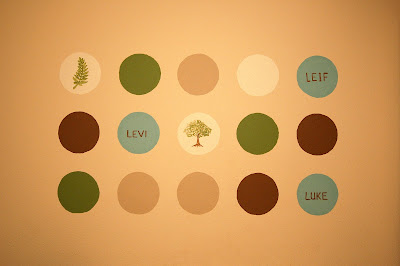

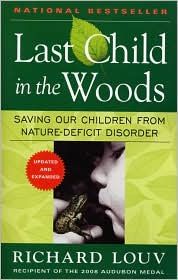


In the DVD player (and on my book pile, and finished up with Levi on audio CD):
The Secret Garden:
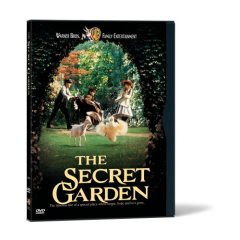
Is the theme obvious?
Maybe I just need some spring to arrive.
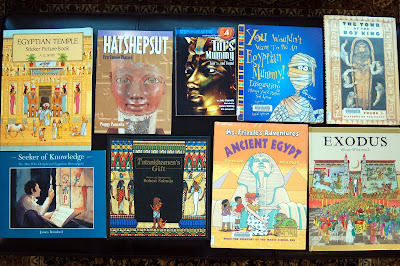 After four months of weaving in and out of Ancient Egypt, we're heading out for good! We had to finish up a few from our huge stack of books and then put them back on the book shelf where they will most likely wait until we return to ancient history in four years.
After four months of weaving in and out of Ancient Egypt, we're heading out for good! We had to finish up a few from our huge stack of books and then put them back on the book shelf where they will most likely wait until we return to ancient history in four years. When I post about homeschooling, I rarely have seasoned advice. I just share where we are at, what new things we're trying, our plans for the future, and whatever else comes to me. I don't usually post about where we've been because I'm trying to keep up with where we're going.
When I post about homeschooling, I rarely have seasoned advice. I just share where we are at, what new things we're trying, our plans for the future, and whatever else comes to me. I don't usually post about where we've been because I'm trying to keep up with where we're going. Around age 1:
Around age 1: All three of my boys have loved the picture book Museum ABC. This book satisfies both of my priorities. It is beautiful and inspiring, the boys enjoy it, and they've all learned their letters easily. One of my favorite things about the book is that each letter is very large and clearly printed on its own page.
All three of my boys have loved the picture book Museum ABC. This book satisfies both of my priorities. It is beautiful and inspiring, the boys enjoy it, and they've all learned their letters easily. One of my favorite things about the book is that each letter is very large and clearly printed on its own page.My best tip for reading this book (or any alphabet book) is to emphasize the letter sounds (remember to use short vowel sounds such as those used in cat, set, pig, pot, and mug). I simply say 'A says a, a, a, apple.' (Sometimes I only say the sound, particularly when the 1 year-old is rapidly turning pages.)
I Spy: An Alphabet in Art is also a great choice, as it features both upper-case and lower-case letters.
Letters learned. That's all there is to it.
Ages 2-3:
 Levi learned his letter sounds after watching the Leap Frog Letter Factory DVD just a handful of times. (I didn't use the above tip with him...learned that the hard way.) Both Levi and Luke have loved this DVD. It also shows the lowercase letters but not prominently. (I wish I could find a really great children's book with both uppercase and lowercase letters. Any suggestions? ETA: I added a book selection above.)
Levi learned his letter sounds after watching the Leap Frog Letter Factory DVD just a handful of times. (I didn't use the above tip with him...learned that the hard way.) Both Levi and Luke have loved this DVD. It also shows the lowercase letters but not prominently. (I wish I could find a really great children's book with both uppercase and lowercase letters. Any suggestions? ETA: I added a book selection above.)This is a painless, fast way to learn letter sounds. Really.
The second DVD, Talking Words Factory, shows the child how to put three or four letters together to make words.
Around age 4 or later:
 I started using The Ordinary Parent's Guide to Teaching Reading with Levi soon after he turned 4. Luke begged for lessons at 3 1/2. You could easily begin this book between the ages of three and five.
I started using The Ordinary Parent's Guide to Teaching Reading with Levi soon after he turned 4. Luke begged for lessons at 3 1/2. You could easily begin this book between the ages of three and five.We were able to skip the first 26 lessons since the boys had already learned their letter sounds, although we spent a short amount of time making sure they could recognize the lowercase letters. Section 3, Short Vowel Words, and Section 4, Two-Consonant Blends went quickly and smoothly since the boys had already been introduced to the concepts through the Word Factory DVD.
Levi surprisingly struggled with wanting to do his reading lessons. I knew he could do it, but I think he was feeling uninspired. The sentences and stories were particularly tough for him to concentrate on even if I used a blank card to cover up the words below and my finger to cover up the words ahead. There was just too much print on each page and too little for his imagination. I ended up taking a break with him and just used sight words flash cards and beginning readers.
 I highly recommend the Now I'm Reading beginning readers by Nora Gaydos. Both of my boys have been completely entertained by them and, more importantly, became happy and confident readers because of them. Unlike Dr. Seuss books or I Can Read type books (which we've used later in the game), these readers begin with three letter, short vowel words. If a child knows his letter sounds, it doesn't take much until they are able to read a whole book. That is a huge accomplishment!
I highly recommend the Now I'm Reading beginning readers by Nora Gaydos. Both of my boys have been completely entertained by them and, more importantly, became happy and confident readers because of them. Unlike Dr. Seuss books or I Can Read type books (which we've used later in the game), these readers begin with three letter, short vowel words. If a child knows his letter sounds, it doesn't take much until they are able to read a whole book. That is a huge accomplishment! Bob Books are often recommended, as well. I have a hard time getting past the quirky, childish drawings, but they are great for supplementing the Nora Gaydos books (which have colorful and entertaining illustrations). They might be a great choice for a child easily distracted by pictures. In particular, I would recommend getting sets 3 and 4 to use between levels 1 and 2 of the Nora Gaydos readers.
Bob Books are often recommended, as well. I have a hard time getting past the quirky, childish drawings, but they are great for supplementing the Nora Gaydos books (which have colorful and entertaining illustrations). They might be a great choice for a child easily distracted by pictures. In particular, I would recommend getting sets 3 and 4 to use between levels 1 and 2 of the Nora Gaydos readers.
 Mister Bones is perfect for the dinosaur enthusiast:
Mister Bones is perfect for the dinosaur enthusiast: The Mighty Mississippi is one of at least six in a series of Wonders of America. They are all level 1. Titles include The Rocky Mountains, Niagara Falls, Mount Rushmore, and others.
The Mighty Mississippi is one of at least six in a series of Wonders of America. They are all level 1. Titles include The Rocky Mountains, Niagara Falls, Mount Rushmore, and others. Wind is one of a series of four books about weather.
Wind is one of a series of four books about weather.
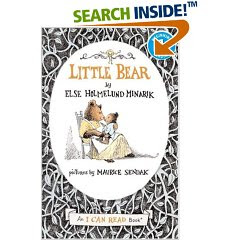 I'll continue my recommendations beyond level 1 readers in another post.
I'll continue my recommendations beyond level 1 readers in another post.

Keep it up, y'all. I actually feel like I've accomplished something now. (I know, I know. Don't ruin it for me!)


 Why this kid should never watch commercials:
Why this kid should never watch commercials:Can I get some support over here?! (Levi was working on a craft project and apparently not getting the help or attention he needed.)
Levi's superhero name should be WordBoy. (Kinda like the new cartoon WordGirl...)
My diagram indicates...
scrumptious
scour (rather than 'look all around for'...)
plank (board)
release
finishing touches
would you kindly...
pleaded
thicket
retrievable
cunning trap
tattered
devoured
exploded with laughterrestore
extend My mom. Mother of three daughters. Three daughters who learned to walk on this road. Who learned to ride bikes on this road. Who adventured, and discovered, and imagined on this road throughout the whole of their childhood.
My mom. Mother of three daughters. Three daughters who learned to walk on this road. Who learned to ride bikes on this road. Who adventured, and discovered, and imagined on this road throughout the whole of their childhood.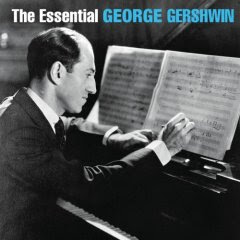
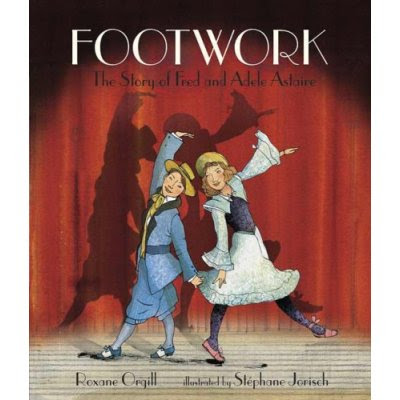
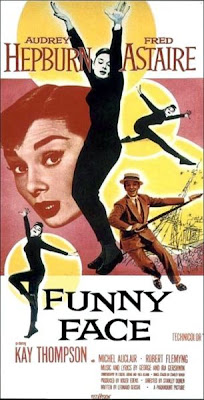
Just for you:
(Speaking of connections, check out 4:20 on the video. Look familiar?)
 A friend of mine recently recommended The Introvert Advantage: How to Thrive in an Extrovert World. It has been making the rounds among my predominately introverted social circle, and for good reason. Many introverts grow up feeling like a fish out of water, thinking something is wrong with them. Our world is geared to put value on extroverted personalities.
A friend of mine recently recommended The Introvert Advantage: How to Thrive in an Extrovert World. It has been making the rounds among my predominately introverted social circle, and for good reason. Many introverts grow up feeling like a fish out of water, thinking something is wrong with them. Our world is geared to put value on extroverted personalities.pg. 54
Introverted children usually get the message loud and clear that something is wrong with them. In a study that was replicated three times with the same findings, introverts and extroverts were asked if they would prefer their ideal self to be extroverted or introverted. They were also asked if they would prefer their ideal leader to be introverted or extroverted. Reflecting the prejudices in our culture, both introverts and extroverts choose extroverts their ideal self and their ideal leader.
pg. 19
Introverts draw energy from their internal world of ideas, emotions, and impressions. They are energy conservers.
...[Extroverts] are energized by the external world--by activities, people, places, and things. They are energy spenders.
pg. 83
Introverts walk around with lots of thoughts and feelings in their heads. They are mulling--comparing old and new experiences. They often have an ongoing dialogue with themselves. Since this is such a familiar experience, they may not realize that other minds work in different ways. Some introverts aren't even aware that they think so much, or that they need time for ideas or solutions to 'pop' into their heads...This requires reflection time without pressure. They also need to give themselves physical space to let their feelings and impressions bubble up.
 The other evening my husband suggested we head over to my parents' home to go for a walk. The evening was beautiful and Russ had a coconut cream pie (thanks to Costco) he wanted to share. We couldn't get a hold of my mom and dad, but we decided to go for a walk anyway and hope they showed up.
The other evening my husband suggested we head over to my parents' home to go for a walk. The evening was beautiful and Russ had a coconut cream pie (thanks to Costco) he wanted to share. We couldn't get a hold of my mom and dad, but we decided to go for a walk anyway and hope they showed up. We drove the mile or two and got out the kids' bikes. I spent my entire childhood on this road. It is a quiet mile-long country road.
We drove the mile or two and got out the kids' bikes. I spent my entire childhood on this road. It is a quiet mile-long country road.
 I can't describe to you how sentimental this spot of earth is to me. It contains more memories and emotions than any other.
I can't describe to you how sentimental this spot of earth is to me. It contains more memories and emotions than any other. We now live at the base of the dark hill in the background. We wave at my parents (okay, they'd need binoculars...) across the field.
We now live at the base of the dark hill in the background. We wave at my parents (okay, they'd need binoculars...) across the field. It turns out my mom was trying to call us on her cell phone as soon as we had left. She was at the store picking up stuff for root beer floats and they wanted us to come over. Great minds think alike. We passed them on the road when they came home. Mom hopped out of the car to finish the walk with us:
It turns out my mom was trying to call us on her cell phone as soon as we had left. She was at the store picking up stuff for root beer floats and they wanted us to come over. Great minds think alike. We passed them on the road when they came home. Mom hopped out of the car to finish the walk with us:
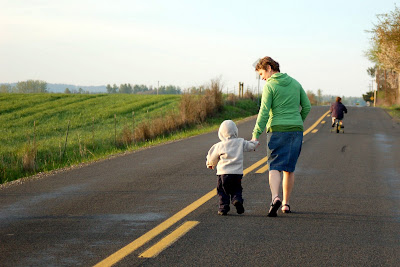
 Do you have a favorite spot on earth? I'm thrilled to live just a mile from mine. I visit my second favorite spot at least once a year. Blessed. Yep. That's what I am.
Do you have a favorite spot on earth? I'm thrilled to live just a mile from mine. I visit my second favorite spot at least once a year. Blessed. Yep. That's what I am.